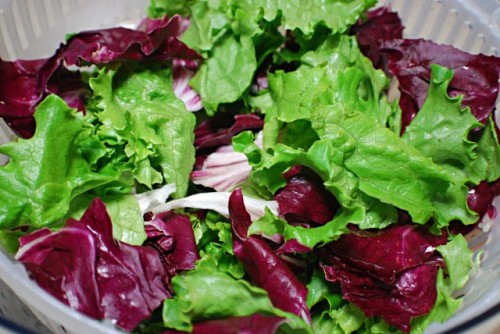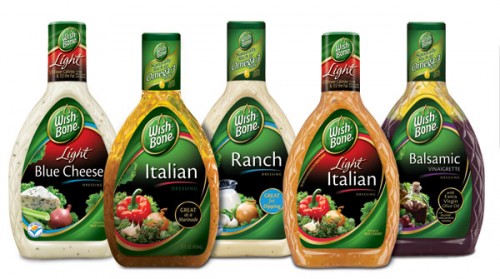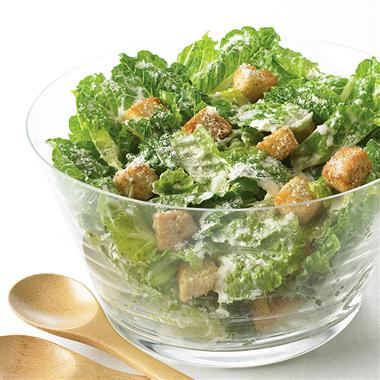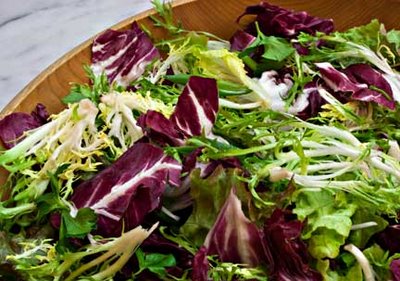To dress a salad in Italy is simplicity itself: bring a bowl of salad greens (preferably one to three varieties of radicchio tossed together – that’s all) to the table, add some of the best extra-virgin olive oil available, a small splash of red-wine vinegar or lemon juice, a generous sprinkle of salt and a bit of pepper; toss again and serve on a salad plate (don’t infect the leafy greens with left-over pasta sauce or juice from the ossobuco.)

The only debate is whether inexpensive balsamic vinegar (not the traditional DOP stuff from Modena) is an acceptable substitute for red-wine vinegar. Purists would say emphatically “No” but the number of Florentine neighborhood restaurants that bring the sweeter version of vinegar to the table seems to argue for, at least, an acceptable option to the Food Rule.
Italian Dressing, known and loved in the United States (as well as Canada, the U.K and most of the British colonies), is a vinaigrette-type salad dressing, consisting of water, vinegar or lemon juice, vegetable oil, chopped bell peppers, usually sugar or corn syrup, and various herbs and spices including oregano, garlic, fennel, dill and salt. Onion and garlic is often added to intensify the dressing’s flavor. Usually it is bought bottled or prepared by mixing oil and vinegar with a packaged flavoring mix consisting of dehydrated vegetables and herbs.

North American-style Italian dressing, and especially Creamy Italian, which consists of the same ingredients, but with buttermilk or mayonnaise added to make it creamy, is not acceptable to the Italian palate. (“Che schifo” or Che esagerazione!” says Francesca.) Don’t ask for it in a restaurant in Italy or particularly from the cook in an Italian home.

Needless to say, you will also not find the following dressings in any Italian kitchen: Thousand Island, Ranch, Blue Cheese, Russian, Louis, Honey Dijon, French, Ginger Honey, and, perhaps surprising, Caesar Dressing
Caesar Dressing is much more American than Italian. The most reliable story of its origins reports that Caesar Cardini created the salad and its dressing in Mexico.

Caesar (born Cesare) came from near Lago Maggiore. He and his brother Alex emigrated to the U.S. after World War I. The Cardini’s lived in San Diego, but operated a restaurant in Tijuana to circumvent Prohibition. According to Caesar’s daughter Rosa, on July 4th 1924 the salad was created on a busy weekend at Caesar’s Restaurant. It is said that Caesar was short of supplies and didn’t want to disappoint the customers so he concocted this salad with what was on hand: romaine lettuce and croutons dressed with parmesan cheese (another Food Rule, coming soon), lemon juice, olive oil, egg, Worcestershire sauce, garlic, and black pepper. To add a bit of flair, he prepared it at the table.
That last bit was the only thing truly Italian about Caesar Salad – a salad should be dressed at the table or right before it comes to the table – the greens should never sit soaking in the olive oil and vinegar.

Try being Italian for awhile – leave the salad dressing bottles in the fridge and simply add a bit of olive oil, vinegar, salt and pepper to some fresh leafy salad greens. You may be surprised by what you taste for the very first time.
